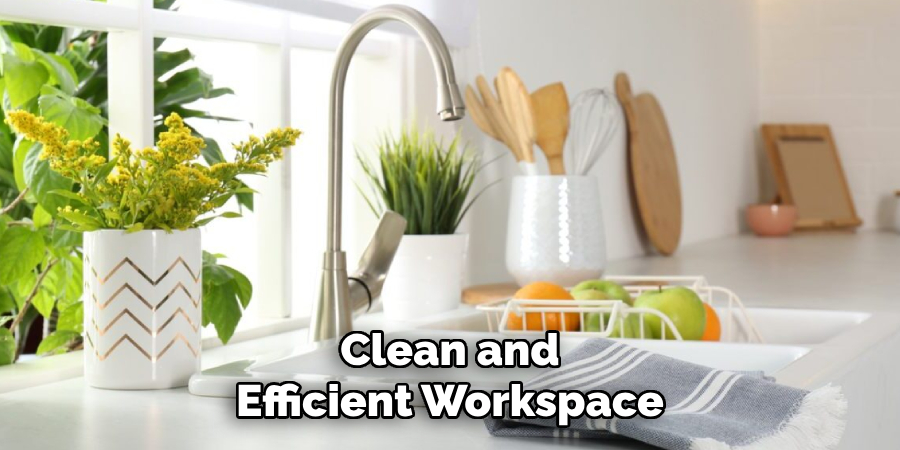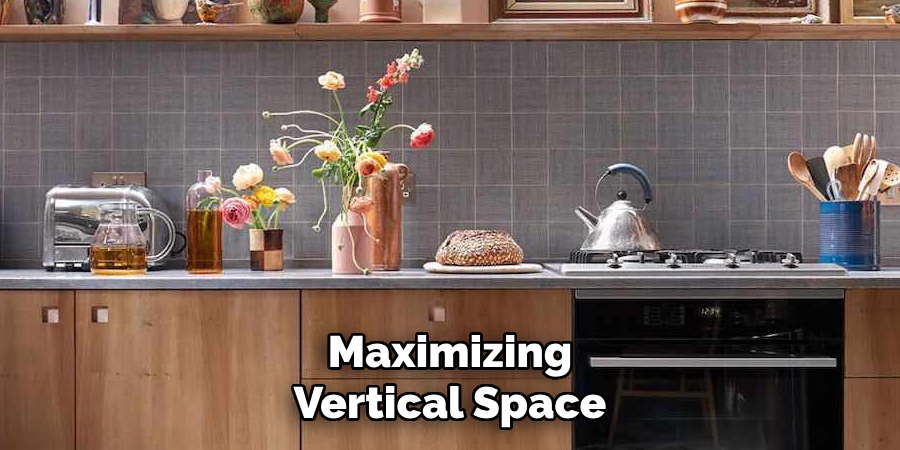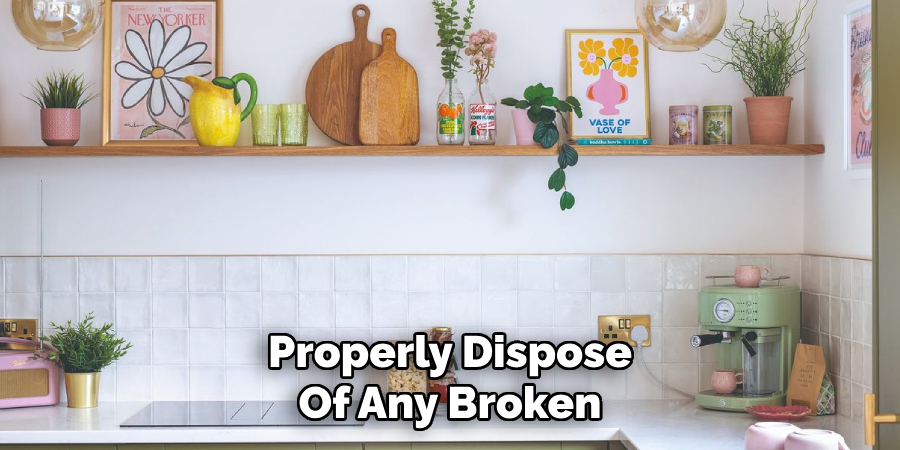Keeping your kitchen countertops clutter-free can transform the space into a more functional, organized, and inviting area. Often, countertops become a catch-all for appliances, mail, and random items, making it challenging to maintain a clean and efficient workspace.

By decluttering, you not only enhance the visual appeal of your kitchen, but you also create more room for cooking, cleaning, and spending quality time with loved ones.
This guide on how to declutter kitchen countertops will walk you through practical steps to simplify and organize your countertops, helping you achieve a clean and stress-free kitchen environment.
Why Declutter Your Kitchen Countertops?
Before diving into the decluttering process, it’s essential to understand why keeping your kitchen countertops clutter-free is beneficial. Here are a few reasons to motivate you:
Creates More Space for Food Preparation
When your countertops are free of unnecessary items, you have more room to cook and prepare meals efficiently.
Improves Visual Appeal
A cluttered kitchen can be overwhelming and uninviting. By keeping your countertops clean and free of unnecessary items, you create a more visually appealing space.
Saves Time
A clutter-free kitchen means less time spent searching for items or clearing space to prepare meals. This results in a more efficient cooking process and saves you time in the long run.
8 Steps on How to Declutter Kitchen Countertops
Step 1: Start with a Clean Slate
Begin the decluttering process by completely clearing off your kitchen countertops. Remove every item, including appliances, utensils, and decorative pieces. This will give you a blank canvas to assess the available space and help you envision how you want your kitchen to look.
Wipe down the countertops thoroughly to remove any dust, crumbs, or stains. Starting with a clean and clear surface sets the tone for the decluttering process and ensures you’re organizing on a fresh foundation.
Step 2: Sort Through Items
Next, go through the items you removed from your countertops and sort them into three piles: Keep, Donate/Sell, and Trash.
Be honest with yourself about which items you use regularly and which ones you can live without. This step will help you prioritize what to keep on your countertops and what to store away.

Step 3: Consider Your Needs
Take a moment to evaluate your daily kitchen routines and identify the items you truly need to keep within easy reach. Think about the appliances, tools, and ingredients you use most often and prioritize those for countertop space.
For example, a coffee maker might deserve a spot on the counter if you use it daily, while a bulky stand mixer can be stored away if it’s only used occasionally. By tailoring your countertop setup to your specific needs, you can maximize functionality while avoiding unnecessary clutter.
Step 4: Utilize Vertical Space
Maximizing vertical space is an excellent strategy for keeping countertops clear while still having essential items within reach. Consider installing wall-mounted shelves, hooks, or magnetic knife strips to store items like spices, utensils, or dish towels. Adding a pegboard can also provide a stylish and functional way to hang pots, pans, or measuring cups.
For smaller kitchens, using stackable storage containers or tiered racks can help you make the most of limited counter space. By leveraging vertical storage solutions, you can free up your countertops while maintaining an organized and efficient kitchen.
Step 5: Clear the Clutter Magnets
Countertops often become cluttered because they serve as a convenient spot to place items that don’t have a designated home. These “clutter magnets” can include mail, keys, or loose papers.
To avoid this, create designated spaces for these items elsewhere in your home, such as a mail organizer or key hook by the front door. This will help prevent unnecessary clutter from accumulating on your countertops.
Step 6: Invest in Drawer and Cabinet Organizers
An organized kitchen is not just about having clean countertops; it also involves effectively utilizing cabinet and drawer space. Consider investing in organizers like dividers, shelves, or stacking bins to maximize storage and make items easier to find.
Keep similar items together, such as cooking utensils in one drawer and baking supplies in another. This will not only make your kitchen more functional but also help prevent clutter from building up on the countertops.
Step 7: Implement a Cleaning Routine
Maintaining a decluttered kitchen requires consistent effort and routine maintenance. Make it a habit to clean off your countertops at the end of each day or after meal prep.
Designating specific times each week for deeper cleaning, such as wiping down appliances or dusting shelves, can also help prevent clutter and keep your kitchen looking tidy. Remember, prevention is key when it comes to keeping clutter at bay.
Step 8: Regularly Reevaluate
Lastly, make it a habit to regularly reevaluate your kitchen countertops and storage solutions. As your needs and habits change, so should your organizational methods. Don’t be afraid to switch things up and try different systems until you find what works best for you.

By following these decluttering steps on how to declutter kitchen countertops and maintaining regular upkeep, you can achieve a clean and organized kitchen countertop that not only looks visually appealing but also makes cooking and meal prep a more enjoyable experience.
Maintaining a Clutter-Free Countertop
Now that you’ve decluttered and organized your countertops, the key to maintaining a clutter-free kitchen is to be mindful of what you bring into the space. Before adding any new items to your countertops, ask yourself if it’s something you truly need and use regularly. If not, find a designated spot for it in a cabinet or drawer instead.
Regularly reassessing your countertop setup, implementing cleaning routines, and being intentional with new additions can help you maintain an organized and functional kitchen space for years to come.
Common Mistakes to Avoid
- Keeping items on the countertops that are rarely used
- Not regularly reassessing and decluttering your countertops
- Using countertops as a storage solution instead of utilizing cabinet and drawer space
- Not having a designated spot for clutter magnets like mail or papers
- Not having a consistent cleaning routine for upkeep
- Not tailoring your countertop setup to fit your specific needs and daily routines.
- Not utilizing vertical space effectively.
By avoiding these common mistakes and implementing the 8 steps on how to declutter kitchen countertops, you can create a functional and visually appealing space that saves you time and makes cooking a more enjoyable experience.
Frequently Asked Questions
Q: How Often Should I Declutter My Kitchen Countertops?
A: It depends on your daily habits and routines. If you cook frequently, it may be beneficial to declutter every few days. However, if you’re someone who uses the kitchen less often, decluttering once a week or even every other week may suffice. The key is to find a routine that works for you and stick to it consistently.

Q: What Items Should I Keep on My Countertops?
A: The items you keep on your countertops should be those that you use regularly and need easy access to while cooking or preparing meals. Some common countertop items include appliances like coffee makers, utensils, cutting boards, and frequently used ingredients. It’s also a good idea to limit decorative pieces as they can quickly add clutter and make cleaning more difficult.
Q: Can I Still Have Decorative Pieces on my Countertops after Decluttering?
A: Yes, you can still have decorative pieces on your countertops, but it’s essential to be mindful and intentional about their placement. Consider limiting the number of decorative items and choosing ones that serve a functional purpose as well.
For example, a fruit bowl or plant can add visual interest while also serving as a place to store healthy snacks or purify the air in your kitchen. Remember, less is more when it comes to keeping countertops clutter-free.
Q: What Should I Do with Items I No Longer Want?
A: After sorting through your countertop items and designating them into piles of Keep, Donate/Sell, and Trash, make sure to follow through with properly disposing of the items you no longer want. Consider donating gently used items or having a garage sale to sell them.
Properly dispose of any broken or unusable items in an environmentally-friendly way. Remember, getting rid of clutter is not just about organizing, but also being mindful of our impact on the environment.

Conclusion
Decluttering your kitchen countertops is a rewarding process that requires thoughtful planning and consistent upkeep. By prioritizing functionality, utilizing vertical space, and creating designated areas for frequently used items, you can transform your kitchen into a more organized and stress-free environment.
Remember, the key to maintaining a clutter-free kitchen is finding a system that works for you and making it a habit to reassess and refresh your space regularly. With these steps, you can enjoy a clean, efficient, and visually appealing kitchen that enhances your daily cooking and meal prep experience. Thanks for reading this article on how to declutter kitchen countertops.
Professional Focus
Angela Ervin, a former interior designer turned blogger, specializes in kitchen design and renovations. Through her website, she blends her passion for cooking with design expertise, sharing practical and creative ideas. Known for balancing functionality and beauty, Angela’s insightful content has made her a trusted voice in home design and lifestyle.
About the Author
Angela Ervin, an experienced interior designer and blogger, combines her passion for kitchen renovations with storytelling. Living in Petersburg with her family, she enjoys cooking and testing her projects firsthand. Known for her humor and relatable style, Angela shares creative, functional design insights through her content, making her a trusted voice in home design.
Education History
University: Virginia Commonwealth University
Degree: Bachelor of Fine Arts (BFA) in Interior Design
- Angela’s education at VCU focused on mastering core interior design principles, including spatial planning, color theory, materials selection, and sustainable design practices.
- She gained hands-on experience through studio projects and collaborative design exercises, which honed her ability to create functional and aesthetically pleasing environments.
- Her coursework also emphasized problem-solving and practical applications of design, preparing her for real-world projects like her self-directed kitchen renovations.
- The program’s strong foundation in both technical skills and creative expression shaped Angela’s ability to seamlessly integrate form and function in her work.
